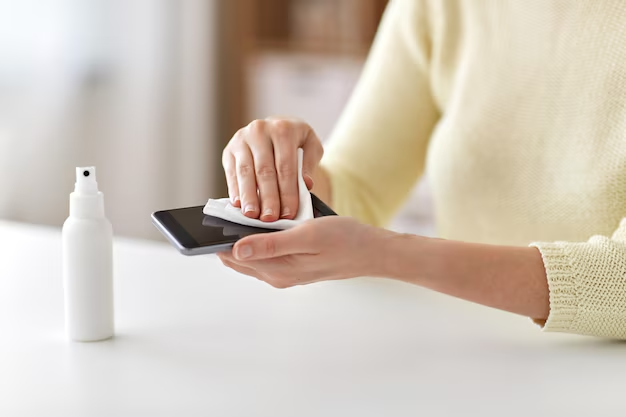Is It Safe to Be Close to Someone with Shingles? Understanding Risks and Precautions
Being around someone with shingles can raise many questions and concerns, especially regarding the potential for disease transmission. Understanding what shingles is, how it spreads, and what precautions can be taken is essential in navigating this health issue safely.
What is Shingles?
Shingles, medically known as herpes zoster, is a viral infection that causes a painful rash. It is caused by the varicella-zoster virus, the same virus that causes chickenpox. After a person recovers from chickenpox, the virus lies dormant in the body and can reactivate years later as shingles.
Symptoms of Shingles
- Painful Rash: Often occurring on one side of the body or face.
- Blisters: Scab over in about 7 to 10 days and clears up within 2 to 4 weeks.
- Tingling or Pain: Affected area may feel itchy or numb before the rash appears.
- Fever, headache, chills, and upset stomach are also common.
Contagious Nature of Shingles
Understanding when shingles is contagious is crucial:
- The virus can be spread from a person with active shingles to those who have never had chickenpox. This will cause them to develop chickenpox, not shingles.
- Shingles is less contagious than chickenpox and is generally spread through direct contact with the rash.
When is Shingles Contagious?
Shingles becomes contagious when the rash is in the blister phase. It stays contagious until the blisters crust over.
Who is Most At Risk?
- Pregnant Women: Those who have never had chickenpox or the vaccine are at risk if exposed to shingles.
- Individuals with Weakened Immune Systems: Such as those undergoing chemotherapy.
- Newborns: If the mother has not been vaccinated or previously exposed to the virus.
Preventive Measures Around Someone with Shingles
For the Person with Shingles
- Keep the Rash Covered: Use loose, non-stick bandages to cover the rash.
- Avoid Scratching: This can lead to further infection and spread.
- Good Hygiene: Regular handwashing can prevent the spread of the virus.
- Stay Away from High-Risk Individuals: Pregnant women, infants, and immune-compromised individuals should be avoided until the rash heals.
For those Around Someone with Shingles
- Limit Contact: Especially with the rash itself.
- Observe Good Hygiene: Wash hands frequently and avoid sharing personal items.
- Be Informed: Understanding personal risk factors can inform safe interactions.
Vaccination: A Key Preventive Strategy
Chickenpox Vaccine
Given during childhood, this vaccine reduces the likelihood of initial infection with the varicella-zoster virus.
Shingles Vaccine
Zoster Vaccine Recombinant, Adjuvanted is recommended for adults over 50 to prevent shingles and its complications.
- Effectiveness: Significantly reduces the risk of developing shingles.
- Who Should Get It: Discuss timing with a healthcare provider, especially if you are over 50.
Common Concerns About Shingles
Is Shingles Painful?
Yes, shingles can be particularly painful. This pain can continue even after the rash has healed, a condition known as postherpetic neuralgia.
Can You Get Shingles More Than Once?
While it is uncommon, some individuals can experience shingles more than once.
Are There Complications?
Besides postherpetic neuralgia, complications may include vision loss (if shingles affect the eyes), neurological issues, and skin infections.
How to Care for Someone with Shingles
If you are in a caregiving role, certain measures can reduce stress and prevent disease spread:
- Help with Daily Activities: Bathing and dressing can be challenging for those with shingles. Assist carefully, avoiding direct contact with the rash.
- Emphasize Comfort: Cool baths and soothing lotions can alleviate itching and pain.
- Emotional Support: Acknowledge their discomfort and reassure them.
Practical Tips for Being Around Someone with Shingles
- Maintain Safe Distance: When interacting with someone with shingles, a cautious approach minimizes risk.
- Use Personal Protective Equipment: Masks and gloves can provide an extra barrier.
- Encourage Vaccination: If you’re eligible, ensure that you are vaccinated against chickenpox and shingles.
- Stay Educated: Understanding the symptoms and stages of shingles enhances safety for everyone involved.
A Meaningful Insight
The looming fear of shingles should not hinder day-to-day interactions with friends or family members affected by it. Through understanding, taking appropriate precautions, and promoting vaccination, the spread can be controlled effectively. It's about balance – ensuring protection while showing empathy.
Summary: Navigating Shingles Safely
- 🔍 Recognize Symptoms: Be aware of rash, pain, blisters, and other associated symptoms.
- 🚫 Limit Exposure: Avoid contact with the rash to prevent spreading the virus.
- 👶 Protect Vulnerable Groups: Keep high-risk individuals like pregnant women and newborns safe.
- 💉 Vaccinate: Ensure immunizations for chickenpox and shingles as appropriate.
- 🧼 Prioritize Hygiene: Regular handwashing and clean practices are essential.
- 🕊️ Promote Comfort: For those affected by shingles, ensure emotional and physical comfort.
By maintaining informed and responsible behaviors, it's possible to interact thoughtfully and safely with someone experiencing shingles.
